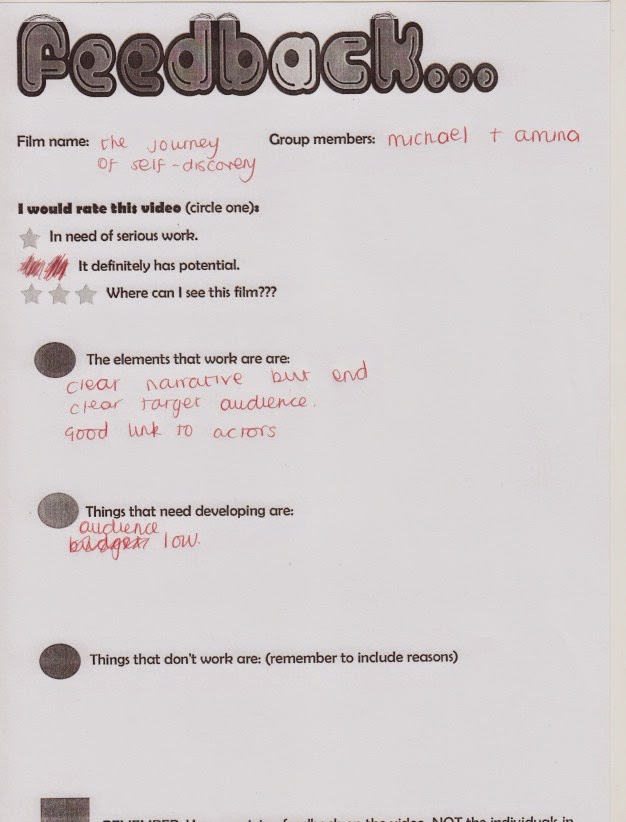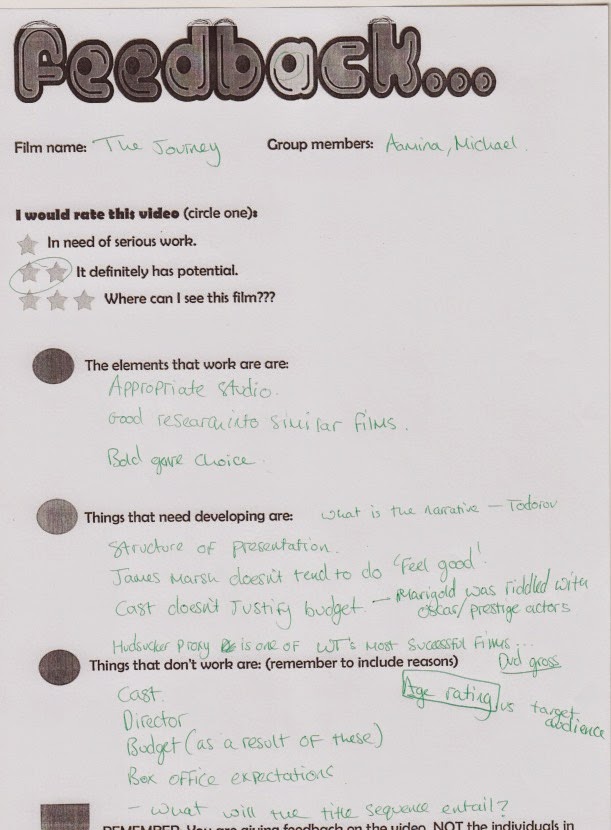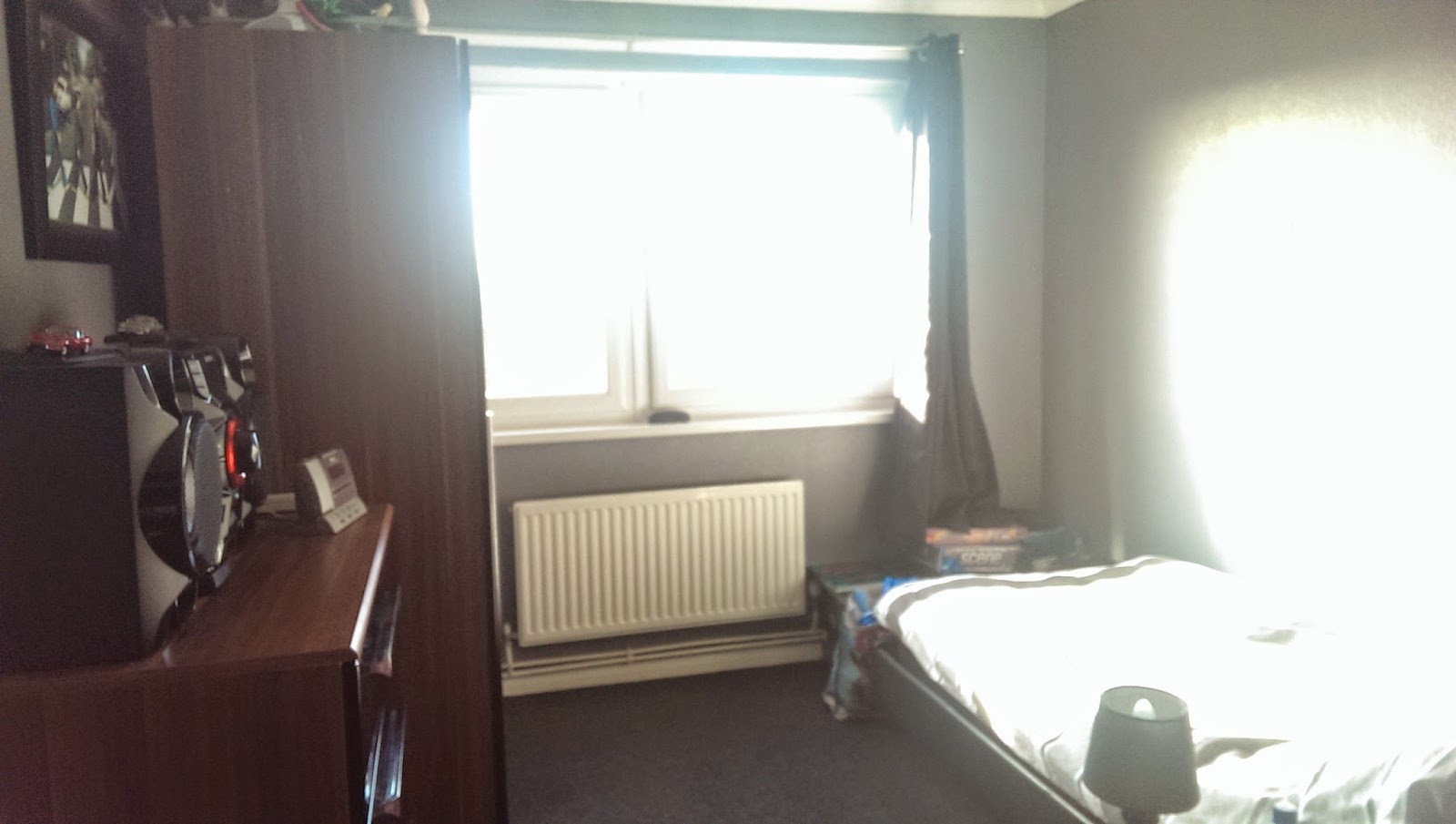I can make presumptions from watching The Game’s
title sequence that it is of the genre drama mystery thriller. The sequence
shows what seems like home video clips of a birthday party for a boy. The
sequence also regularly cuts to a short video of a boy with his father. The
sequence is done in a way that it creates mise-en-scene of a thriller with
nostalgia that creates an eerie and spooky atmosphere.
Richard ‘Dr’ Baily created the title sequence. He
had worked on many films including Fight Club and Superman Returns. When
creating this title sequence Baily had to think about typography, soundtrack,
iconography and mise-en-scene to create a successful piece of work.
The typography in this sequence is a white serif
font. The typography is only featured during the puzzle piece part of the title
sequence. This was done to put all attention on what was happening in the home
videos part of the sequence. The font is in bold showing the importance of the
text. The font colour is white because of binary oppositions, Black vs White.
This could suggest Good vs Bad. The typography is also placed in the sequence
to make it seem as if it was part of the puzzle. This maybe suggesting that the
film is a puzzle waiting to be cracked. This is accompanied by a subtle
smashing of glass, this could suggest that something is being smashed or
cracked in the film.

The soundtrack for the sequence is by Howard
Shore who is a renowned conductor famous for the scores for The Lord of the
Rings trilogy. Baily probably chose Shore because he had previously written the
score to Se7en which was a major success. In the sequence we can hear a piano
playing softly with a sense of nostalgia to it. The piano though does have a
sense of uneasiness and eeriness to it. It has a dark tone to it which is
gentling yet suspicious.
The iconography in the clip shows things about the film and the
characters in the clip. We see the puzzle pieces that transition between the
cast and crew. This could represent many things. It could suggest that there is
an enigma to the story that we as an audience must work out. This enigma would
be the basis to the nostalgic clips. It could also suggest that a character in
it has had a complicated life because a puzzle is complicated. This could be
the boy we see at his birthday party. He may have secrets that we need to work
out. It could suggest that there is a ‘puzzle piece’ of his life missing that
he needs to find to settle things that had happened before in his life. This
puzzle sequence was described by Fincher (Director or The Game) as “an elegant
introduction to who the character is”.
The mise-en-scene is in the clip shows us that
the boy’s family is wealthy because of the elegant setting and the
sophisticated party that we see in the nostalgic footage. We regularly see the
boy’s father in the sequence. This could be of importance in the clip. We see
regularly cuts to mid-shots of the boy and his father together who seem as if
they are having fun. This could represent a close and good relationship.
Although at the end of the clip we see he boys father walk towards the
darkness, this could connote a disappearance of the father in the boy’s life
and possibly death.


As we delve deeper into the clip we can notice
that there seem to be several shots where water plays a key part in the
sequence this could represent a theme of water. There is a shot of a boy being
pushed into a pool, the birthday boy holding a toy yacht with his father, a
shot of a remote controlled boat in water and a final shot of the man splashing
water in his face over a sink. This makes a subtle hint to the audience that
that man is the birthday boy in the home videos. Whereas in the scene’s before
the boy is happy and laughing in this scene he appears to be depressed and
unhappy, showing something bad has happened in his life to make him feel this
way.





























